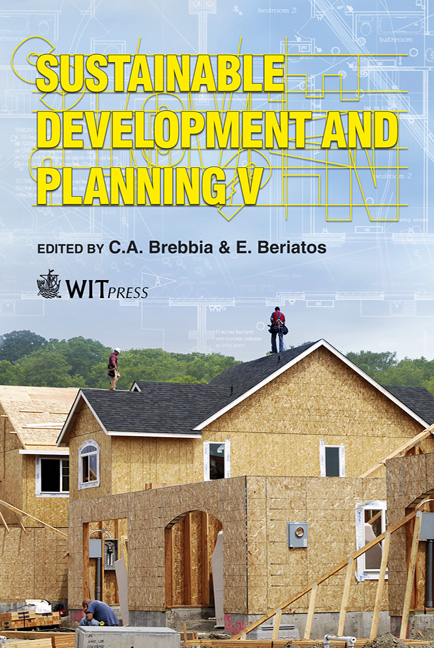The Impact Of Urban Sprawl On The Heritage Areas Through The Urban Fabric Of Cities
Price
Free (open access)
Transaction
Volume
150
Pages
16
Page Range
299 - 314
Published
2011
Size
2461 kb
Paper DOI
10.2495/SDP110261
Copyright
WIT Press
Author(s)
A. El Menchawy, S. S. Aly & M. A. Hakim
Abstract
Historical sites are the economic, cultural and social drivers for a dynamic and sustainable environment. They constitute an integral part of nations’ history, identity and regional diversity. Small and medium-sized historical sites with their outstanding built cultural heritage strongly shape the urban landscapes and form the backbone for a balanced and polycentric settlement structure. Historical sites face many challenges, like accelerating globalization, structural, social and demographic changes as well as environmental problems and urban growth. As urban growth is a double faced process it is the concentration of population in urban areas due to supplied services that are missing in rural areas, at the same time it is a decline of socio-economic areas agglomerations. This increase in population happens due to the concentration of economic activity, which is an important determinant, and the result of urbanization. This results in introducing unbalanced trends which destroys human cohesion and builds social exclusion in cities and regions. Through urbanization, people ignore their identities and traditions seeking adequate services and a better lifestyle leading to the disappearance of existing urban fabric that creates an undefined urban pattern. The right balance between restoring and preserving unique cultural heritage has to be set to enable futureproof urban development. Urban growth affects the efficiency of production and economic growth, and the way agents interact and live in cities. Understanding its implications and causes has captured the interest of economists, architects and urban planners in the past and deserves to continue doing so in the future. The research aims to extract a set of urban guidelines to cope with the development process with respect to the identity and character of the place and to
Keywords
historical sites, heritage, identity, architectural style, urban conservation





